The 6 Best Bar Trends From 2020-2023
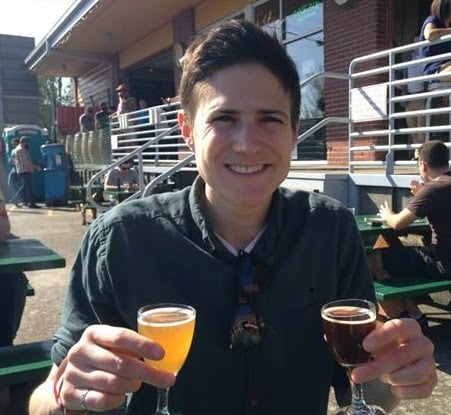
March 16, 2023
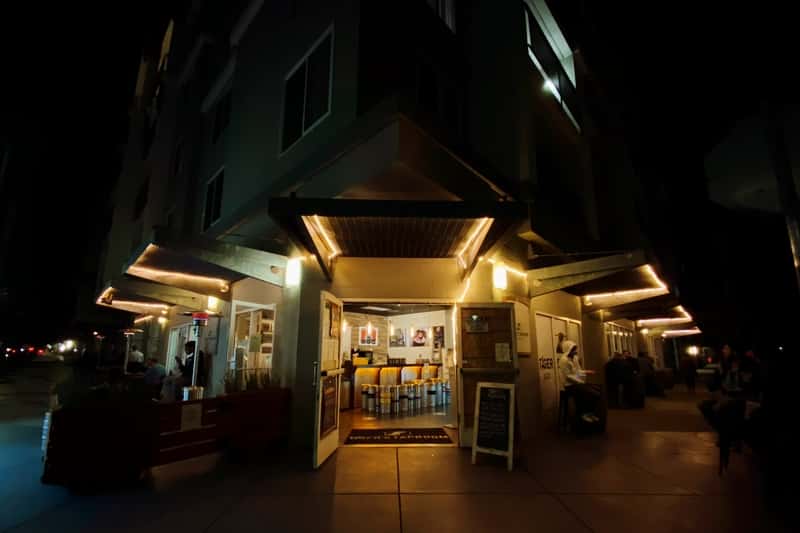
Updated: 3/16/23
Three years ago a global pandemic forced establishments in the hospitality industry to completely rethink, recreate, and reinvent strategies to maintain a revenue stream. And while in 2021 many bars began to return to “business as usual,” the lockdowns from COVID-19 started new bar trends that will keep developing throughout 2023 and beyond.
Above all, keep an eye on these six bar trends, which reflect the inventive ways bar owners have adapted and persevered to keep their businesses alive and their patrons happy.
What We’ll Cover in This Piece:
Bar Trend #1: E-commerce Sales and Alcohol Delivery
While on-premise sales suffered during COVID-19, the e-commerce industry excelled. With normal selling channels disrupted, alcohol delivery, direct-to-consumer (DTC) shipping, e-commerce platforms, and third-party delivery apps skyrocketed in popularity.
“In the first eight weeks of COVID-19, we saw decades worth of e-commerce adaptation in the industry,” says Trace Smith, CEO of Next Glass.
The sudden leap forward resulted as many states relaxed the convoluted laws maintained around shipping alcohol. And bars, taprooms, and other hospitality establishments took advantage.
According to data from IWSR, alcohol e-commerce grew over forty percent in 2020, and shows no signs of slowing down, forecasted to reach $40 billion by 2026. Specifically, beer, cider, and RTD online sales are expected to make up twenty-five percent of all e-commerce purchase in the bev-alc space.
“Boy, did 2020 give us a crash course in selling stuff in new ways,” says Bart Watson, the Chief Economist for the Brewers Association. “And now that people have made investments, they have a greater incentive to stick in the space and sell beer this way.”
Not everyone thinks the trend will stay. For bar owners like Brian Chan, who founded Tiger’s Taproom in Oakland, CA, online sales were very helpful during the pandemic. But now that his establishment is fully open, the webshop orders have dropped to only a few per week. Eventually, he ended up shutting down his online store altogether.
“It’s a lot of work to maintain, so it wasn’t worth it to me,” says Chan.
Similarly, at The Good Hop, a corner bar and retail to-go craft beer spot also located in Oakland, owner Melissa Myers says that her online activity changed significantly when they fully reopened to the public.
“We noticed online sales dropped considerably because people are excited to come in to the point where it’s almost harder to keep up with it,” says Myers.
Instead of relying on the online shop for daily orders, Myers says they’re potentially planning to just utilize it for very seasonal, exclusive, or limited-edition releases.
Whether redefining the main use of your webstore or continuing to operate it on a full scale, the data points to e-commerce and alcohol delivery as a major area of investment across the board for both retailers and beverage companies.
“Even if only a small number of users stick to e-commerce after the pandemic, that will still make a meaningful impact,” says Smith.
Bar Trend #2: Serving Beyond Beer
In order to keep loyal consumers engaged and attract new ones, a diversified tap list is crucial. While this held true even before the pandemic, the global crisis accelerated it as fans looked for new, unique things to drink at home. Here are a few of the most popular:
Draft, Canned, and Ready-to-Drink (R2D) Cocktails
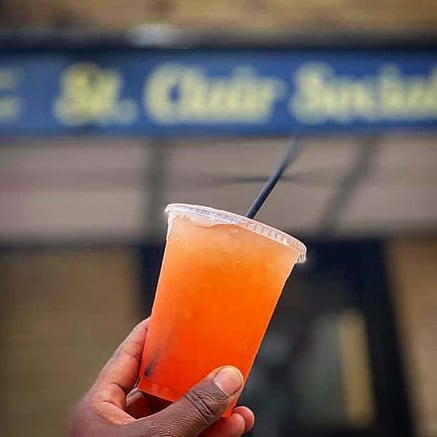
During the pandemic, one bev-alc segment grew leaps and bounds above the rest. The ready-to-drink (RTD) category has steadily risen in popularity for the last few years. RTDs were one of the only categories to thrive during the pandemic, and those ripple effects continue to…well, ripple.
According to the alcohol e-commerce site Drizly, RTDs within the spirits category gained a +400% share year over year from 2019 to 2022 on the platform.
And in a survey performed on the site in October, 47% of respondents indicated that they would drink RTDs year round, regardless of the season.
All point to RTDs seeing sustained, healthy growth into 2023 and beyond. We expect that RTDs will continue to see a three-digit change as drinkers continue looking for more creative and experimental ways to consume their mixed drinks.
Inside the bar, draft cocktails (also called cocktails on tap) are an innovative way to serve hard beverages—and they have a huge amount of benefits. From being more efficient than regular cocktails, to requiring fewer employees to serve, lowering operational costs and increasing profits, cocktails on tap are a smart, viable strategy for any bar, restaurant, brewery, or taproom.
“Speed behind a bar is essential, especially right now when there’s a huge staffing crisis across the country,” says Cat Cannon, Chief Operating Officer at Mindful Hospitality Group, a bar consulting, education, and events company that specializes in staffing, education, and helping bars elevate their cocktail menus. Cannon also opened her own bar, St. Clair Social, in Pittsburgh, Pennsylvania, last August. “You have [fewer] people on staff at one time, but [your consumers] are raring to go, so you’re taking care of people all the time. With [cocktails on tap] you do all the prep on the backend, so bartenders just have to pour and go. The faster you get drinks in peoples’ hands, the more money is on the table. The quicker people drink, the more they’ll drink, and the happier they’ll be. It’s a win-win-win for everybody.”
Similarly, canned cocktails are perfect for customers on the go who want to take their drinks outside to a picnic, barbecue, or whatever else.
“I think the one major driver was the COVID pandemic,” wrote Sam Calagione, co-founder of Dogfish Head, which started its own line of canned cocktails two years ago. “During the country-wide quarantine, folks were not going to bars or restaurants. They still wanted bar-quality cocktails in the comfort of their homes, but without the hassle of actually mixing something.”
And Dogfish Head is far from the only major major beverage company cashing in on canned cocktails.
Just look at how the number of products grew: Three years ago, less than a thousand new RTDs entered the market. In 2022, on the other hand, 1,600 new spirits-based cocktails launched in the bev-alc space.
Growler Fills
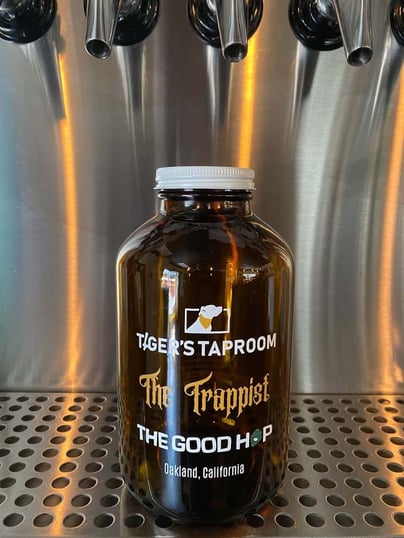
At the bar, draft drinks are king. It’s where businesses make the best margins. Even though Chan’s can sales rose thirty percent during the pandemic, he said the margins weren’t great, giving him just enough revenue to stay afloat. Instead, he pushed growlers.
Together with Myers from The Good Hop and Ruben Dominguez, general manager at The Trappist, Chan started a three-way growler program. Buying a $6, 32-oz growler earned a customer the chance to fill up on beer from any of the three locations.
“We all just wanted to move more draft… because draft is where you make money,” says Chan. “Before COVID, the three of us were going to brew a beer together as a way to bring people from one spot to another, then COVID happened. We decided this could be the collab we wanted to do.”
On average Chan sells thirty to forty growlers per week, a decent amount for a taproom.
Premium Products - Following the trend of easier-to-make and easier-to-serve cocktails, bars are also upping their game with ingredients. Many bartenders that were stuck at home during the pandemic had time on their hands to experiment. And consumers getting back into bars are looking to treat themselves and spend money on a premium product. This means bars are leveraging top-shelf spirits, local ingredients, homemade bitters and simple syrups, and more.
Subscription Boxes and Mix Packs
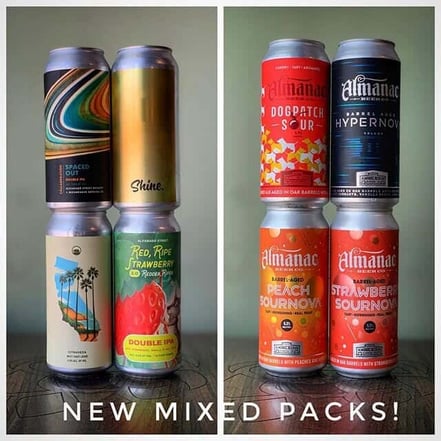
For those continuing to focus on beer, creating a new variety of offerings became imperative during the pandemic. Subscription boxes were a great way to keep consumers entertained, whether by creating their own box or using a third-party service such as Tavour.

At The Good Hop, Myers leveraged her holiday beer boxes. Normally released around the holidays, these boxes feature a mix of beers. And while their biggest sale pre-COVID hit only thirty-four boxes amidst the holiday season, during the pandemic the bar sold a whopping 364 boxes.
“Generally at the bar in normal times you open a tap, you pour a beer in a pint, and you turn around and put the beer on the bar. And that’s it. Now bars are doing all these boxes because COVID forced us all to figure out how to survive,” says Myers.
And Myers points out this option doesn’t just have to feature beer. Think about offering a mystery mixed pack, a box with snacks and beverage pairings, one dedicated just for wine or hard seltzer.
“These mix packs or pairing boxes come all together neatly wrapped and help customers have conversations because they take that mix box and share it with other people, telling them, ‘I got this at The Good Hop and I love this bar,’” said Myers.
Bar Trend #3: Creative Places to Drink
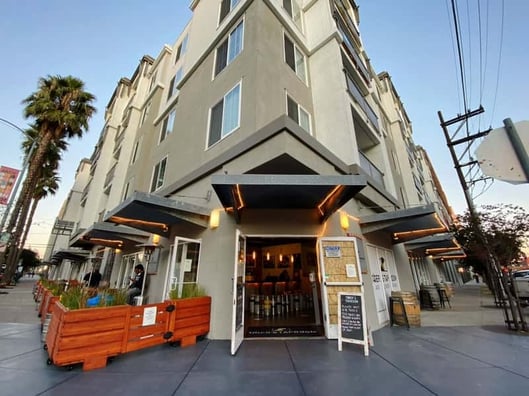
With indoor dining and drinking shut down for much of 2020, bars were forced to get creative. Parklets, or designated sidewalk extensions, became common on city streets, alleyways turned into outdoor taprooms, shipping containers became booth spaces, and more.
That trend hasn't changed even now with business back to normal.
“I quadrupled my outdoor space and we did really well,” says Chan. Tiger’s Taproom sits on a corner, so Chan added seating on both sidewalks alongside his bar, using planters as a barrier. With a capacity for almost forty people, Chan’s outdoor area was crucial to his business. And even will full service inside for a couple years now, the outdoor space has still been crucial to Tiger's Taproom.
Bar Trend #4: A New World Order
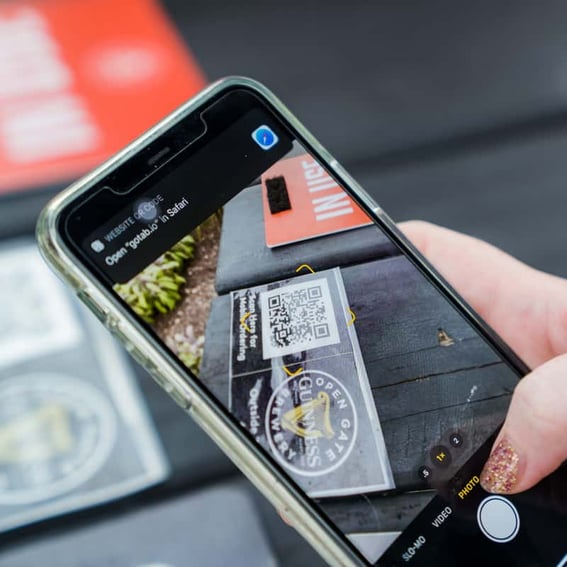
One of the most pivotal turning points in bar trends during the pandemic was the introduction of QR codes and contactless ordering. Creating an online space to order allowed bars to safely fulfill a drink tab with less person-to-person contact.
“COVID caused operators to take a step back and evaluate what they’re doing in their taproom and forced them to make new decisions,” says Christian Behrle, Head of Sales for GoTab, a contactless ordering and payment web service. “You couldn’t continue to run your business like your dad did or how you did in the past. You had to evolve quickly.”
Now, it’s rare to enter a bar or restaurant without simply pointing your phone at a barcode on the table and placing your order. Before March 2020, GoTab counted eighty restaurants and breweries as partners. Within just six months of the pandemic, that number rose to over 200 establishments.
ccording to an eMarketer report from Insider Intelligence, during the height of the pandemic (2020) smartphone users who scanned a QR code at least once during the calendar year surged to 65.7 million people. And while the rush to implement this technology has certainly slowed, businesses are continuing to turn to QR codes as a viable part of their business model.
“One hundred percent, things have changed without question as an operator… Even technology from the start of [the] pandemic to current has progressed at a rapid pace on all fronts,” says Gregg Frazer, V.P. of hospitality at Stone Brewing, who started implementing QR codes at the brewery’s bistro and taprooms right before the global pandemic.
Frazer points to how he’s adopted different types of service models at Stone to reflect changes in the industry. During the height of the pandemic he used what he called a “labor light model.” One heavy on QR codes without much human interaction. Now, Frazer implements a hybrid model that incorporates servers and table touches with an emphasis on ordering and completing payment through QR codes.
He sees this model as the future of the industry.
“With breweries it’s a perfect place and marriage where you can figure out a hybrid service,” says Frazer. “I believe there’s a world where that becomes the preferred style of dining versus strictly the only way to have the capability to order is through a server.”
Frazer’s model reflects what’s happening in the beer and restaurant industry across the globe, specifically with QR codes. Even as people and establishments return to a “new normal,” QR codes have continued to perform well. The National Restaurant Association reported that in 2022, two years after lockdowns, fifty-eight percent of adults surveyed are more likely to access a menu through a QR code or on their phone.
In TouchBistro’s report on “The State of Restaurants in 2022,” seven out of ten restaurants had introduced some form of contactless mobile payment or QR code system.
All signs point to QR codes continuing to experience healthy growth and help drive a number of industries, including beer.
“Breweries are in that right spot to capitalize on using technology and layering in elements of service to provide for a memorable, exceptional experience,” says Frazer.
Bar Trend #5: Social Media
During the pandemic, utilizing social media was integral for bars and businesses. But not necessarily in the way you might think.
Before COVID, Myers at The Good Hop used social media to spread the word about new beers.
“It was just a way to get information out,” says Myers. “But we shifted our voice [during the pandemic] to actually talk and post about things that you might have a conversation about just like you were sitting at the bar.”
Important social movements like Black Lives Matter became an open discussion for Myers.
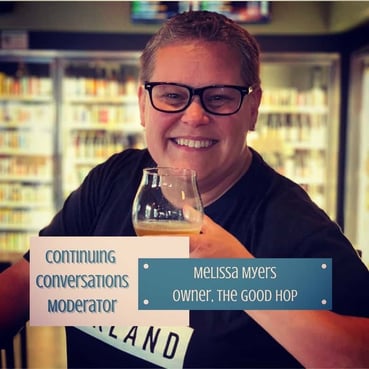
“We kept it really personal and in people’s faces as if they were a part of this community and to make them start speaking up and having conversations.”
The strategy worked. Myers said her social following grew by over fifty percent during COVID. And now those posts that get the most likes and interactions have nothing to do with beer.
“I think it’s huge. It worked. Our posts turned into short conversations instead of just people picking up beer,” says Myers. “Our community kept us going, so we’re definitely going to stick with it.”
Similarly, at Tiger’s Taproom, Chan leveraged his monthly newsletter as a tool to reach his customers during COVID.
“Things were changing all of the time. I put my heart out there and said, Listen, we need your help. That’s not something I ever did before. But the community just rallied and supported. I had a lot of customers tell me that I sent a great email, thanking me for updating them, and saying they're here to support me. It was really nice to hear.”
Bar Trend #6: Diversity, Inclusion, Equity
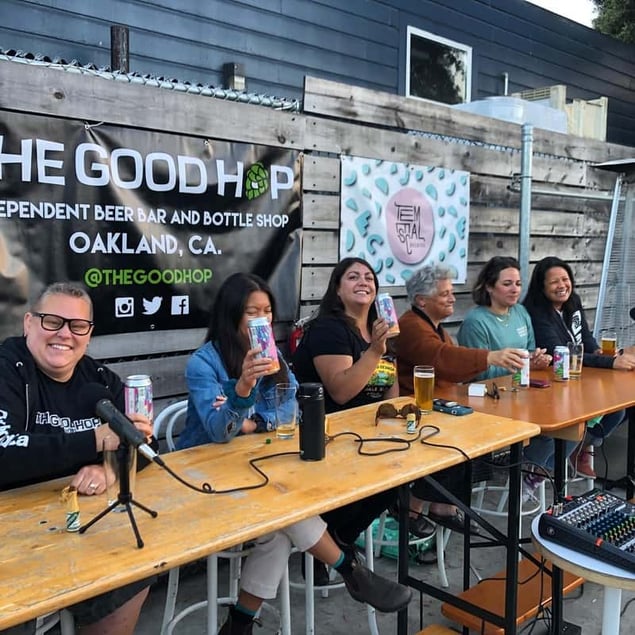
These are unprecedented times in our industry. Yes, a global pandemic shifted the way many of us do business overnight. But various movements around the industry have also led bars and breweries to take a visible stand.
Across the country, we’ve seen bars and breweries stand up for racial injustice with beers like Black Is Beautiful and women stand up to sexism in the industry with Brave Noise.
Those two movements in particular have inspired a wave of action. If you’re a brewery, consider how you can make your own space more inclusive and safe, whether by donating a certain amount from pints per month to a specific organization, hosting a specific socially minded event that fits with your tenets, or just starting conversations around important issues online.
Being candid helps a business foster a like-minded community.
“We just celebrated seven years and up until recently I just considered myself a bar owner. Now I’m a female, lesbian bar owner. It used to make me very uncomfortable to put my personal stances out there, but by doing that, I gave a personality to the bar,” says Myers. “And, in our fight to stay alive, we really, really, really built a community of people. That didn’t always equate to dollars, but it equated to support.”
How 2023 Bar Trends Will Affect Your Business
Overall, this year will be crucial for brewery and bar owners as they continue to pull themselves out of the gaping hole left by the global pandemic. Embracing trends for the next six months means continuing to find ways to generate revenue while welcoming back customers and loyal supporters.
Giving people the opportunity to buy or order online taps into an ever-increasing, profitable revenue stream while mixing up your offerings with RTDs and canned cocktails could bring in new consumers.
Lastly, cultivating a community by backing important issues through your social media will keep your fans coming back to support your business for the foreseeable future.
Unlock Your Beer and Beverage Potential!
Design your beer and food menus and publish them anywhere! Print, QR code, or digital signage - the possibilities are endless with Untappd for Business!
Schedule a demo or start a free 7 day trial today!
